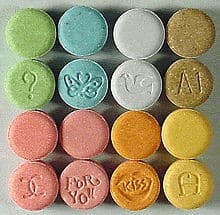Taking the street drug Ecstasy could lead to a potentially fatal weakening and rupture of the spinal cord artery, doctors have warned in the Journal of NeuroInterventional Surgery.
Posterior spinal artery aneurysms – a blood-filled swelling of the spinal cord artery, caused by a weakening and distension of the vessel wall – are rare, with only 12 cases reported to date. But all of them caused spinal bleeding which affected the function of the spinal cord.
Doctors discovered one of these aneurysms in a previously healthy teenager who had taken Ecstasy or MDMA.
The morning after the night before, he woke up with headache, neck pain and muscle spasms. After a week these symptoms suddenly took a turn for the worse, accompanied by nausea, prompting him to seek help at his local emergency department.
A week later the teen was transferred to a specialist neurosurgical unit for further investigations, which revealed an aneurysm, measuring 2 x 1 mm, on the left side of the spinal cord artery at the back of his neck.
The aneurysm was successfully removed, along with the weakened portion of the artery. The teen made a full recovery, with no lasting nerve damage.
But the authors reiterate that Ecstasy use has already been linked to severe systemic and neurological complications, including stroke, inflammation of the arteries in the brain (vasculitis) and internal brain bleeds.
And now, posterior spinal artery aneurysm can be added to the list, they say.
The drug acts on the sympathetic nervous system, sparking a sudden hike in blood pressure, as a result of the surge in serotonin it releases. And this could make any pre-existing aneurysms or other arterial abnormalities prone to rupture, they warn.


